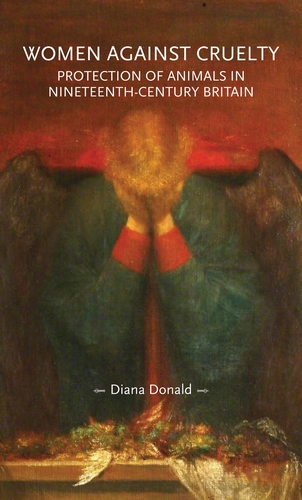Diana Donald

Professor Diana Donald’s works, including on Picturing Animals in Britain 1750-1850 (2007), Endless Forms: Charles Darwin, Natural Science and the Visual Arts (2009), and The Art of Thomas Bewick (2013), all explored the relationship between our concepts of animals and visual images of them in the eighteenth and nineteenth centuries. Her latest book, Women Against Cruelty: Protection of Animals in Nineteenth-century Britain, for which she received a CAF grant, takes up a new theme: the contributions made by British women to the animal protection movement at that time. It was the first book to explore women’s leading role in animal protection in nineteenth-century Britain, drawing on rich archival sources. Women’s own experience of oppressive patriarchy bonded them with animals, who equally suffered from the dominance of masculine values in society, and from an assumption that all-powerful humans were entitled to exploit animals at will. Diana writes:
Women’s contributions to animal protection in nineteenth-century Britain were critically important. They founded animal refuges like the Battersea Dogs’ Home; they initiated and ran the Royal Society for the Protection of Birds; they provided the financial mainstay of the Royal Society for the Prevention of Cruelty to Animals and many other animal charities; they led the opposition to vivisection; and they wrote inspired books and essays like Anna Sewell’s “Black Beauty” and Ouida’s short stories and articles. Yet women’s enthusiasm for the cause of defending animals could easily be dismissed as “sentimentality” or “hysteria” by those who favored a more accommodating policy, or had reasons to oppose animal protection altogether. Only the advance of feminism in the last decades of the nineteenth century made possible a new estimation of “sentiment” and fellow-feeling with animals as a key to reform.


